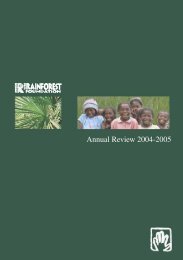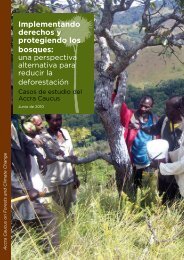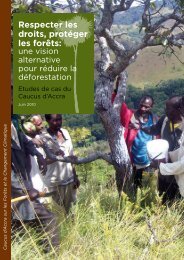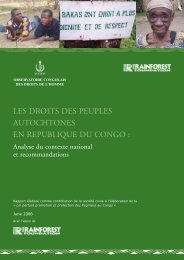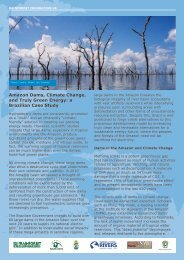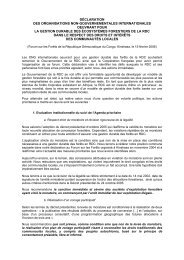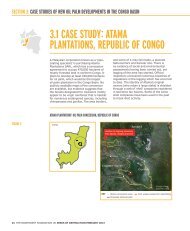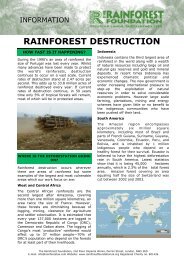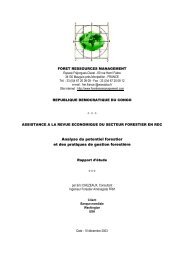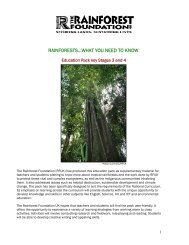JOB DESCRIPTION GIS Database/Website Officer, Community ...
JOB DESCRIPTION GIS Database/Website Officer, Community ...
JOB DESCRIPTION GIS Database/Website Officer, Community ...
You also want an ePaper? Increase the reach of your titles
YUMPU automatically turns print PDFs into web optimized ePapers that Google loves.
Land and Resource Rights<br />
Indigenous peoples’ and forest communities’ rights<br />
Organizational capacity strengthening for local partners<br />
RFUK currently has staff size of 13, growing to around 20, with a number of volunteers or<br />
interns at any given time. It is governed by a Board of seven Trustees. The London-based<br />
Foundation is part of a network of sister organizations, which also include the Rainforest<br />
Foundation US and the Rainforest Foundation Norway.<br />
The Programmes Team<br />
The Programmes Team at the Rainforest Foundation UK is one of three teams in the<br />
organisation and is the main team responsible for the implementation of our projects under<br />
the four themes cited above. The Forest Governance Programme falls under the mandate of<br />
this team.<br />
The Forest Governance programme<br />
The Forest Governance Programme is a large scale four-and-a-half-year programme funded<br />
by the UK Government’s Department for International development with four main<br />
components, each with 2-3 objectives:<br />
Component 1: Continued development of a forestland and resource rights database for<br />
Africa<br />
Objectives<br />
1. To continue development of a geographical database containing accurately mapped<br />
data on forest community occupation and use of forest resources, along with other<br />
key geographical information, as a means for informing policy and legislative<br />
processes, project development and implementation, and private sector investment<br />
decisions about existing community claims to forest land in Africa.<br />
2. To make data and analysed information from the database accessible to national<br />
governments, international agencies, conservation NGOs, private companies and<br />
other stakeholders in order to inform official forest planning, zoning and designation<br />
processes and land and forest legislation and its implementation.<br />
Component 2: Mapping and <strong>Community</strong> Forests in the Central African Republic<br />
3. In 4 years, the entire forest region of CAR, comprising over 4 million hectares, in 5<br />
forest prefectures, is mapped and a comprehensive atlas of land and resource use<br />
produced.<br />
4. To ensure the implementation of the <strong>Community</strong> Forests provisions of the Forest<br />
Code and Manual of Allocation and Management of <strong>Community</strong> Forests in the Central<br />
African Republic<br />
5. By the end of the project, the participatory maps are used to inform land,<br />
governance and poverty reduction policy development and implementation and to<br />
inform national land and forest policy and related actions<br />
Component 3: Land and resource use and tenure mapping in the Democratic Republic of<br />
Congo (DRC)<br />
6. To map through participatory means approximately 110,000 km 2 of forest, including<br />
all of Mai-Ndombe district in Bandundu Province, as well as other selected locations<br />
in Equateur and Orientale Provinces.<br />
7. Decision makers use community geo-referenced data, and participatory mapping in<br />
general, in decision making processes related to forests and land use, in particular in<br />
zoning plans, REDD+ projects and other forest and land reform processes.<br />
2



